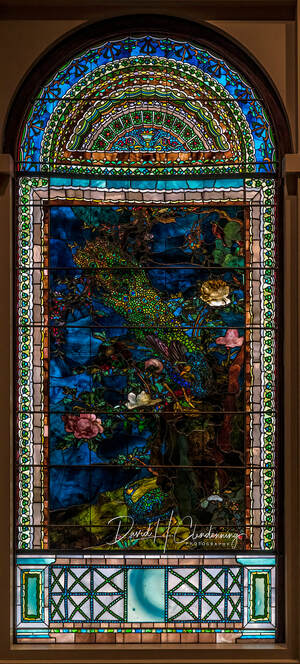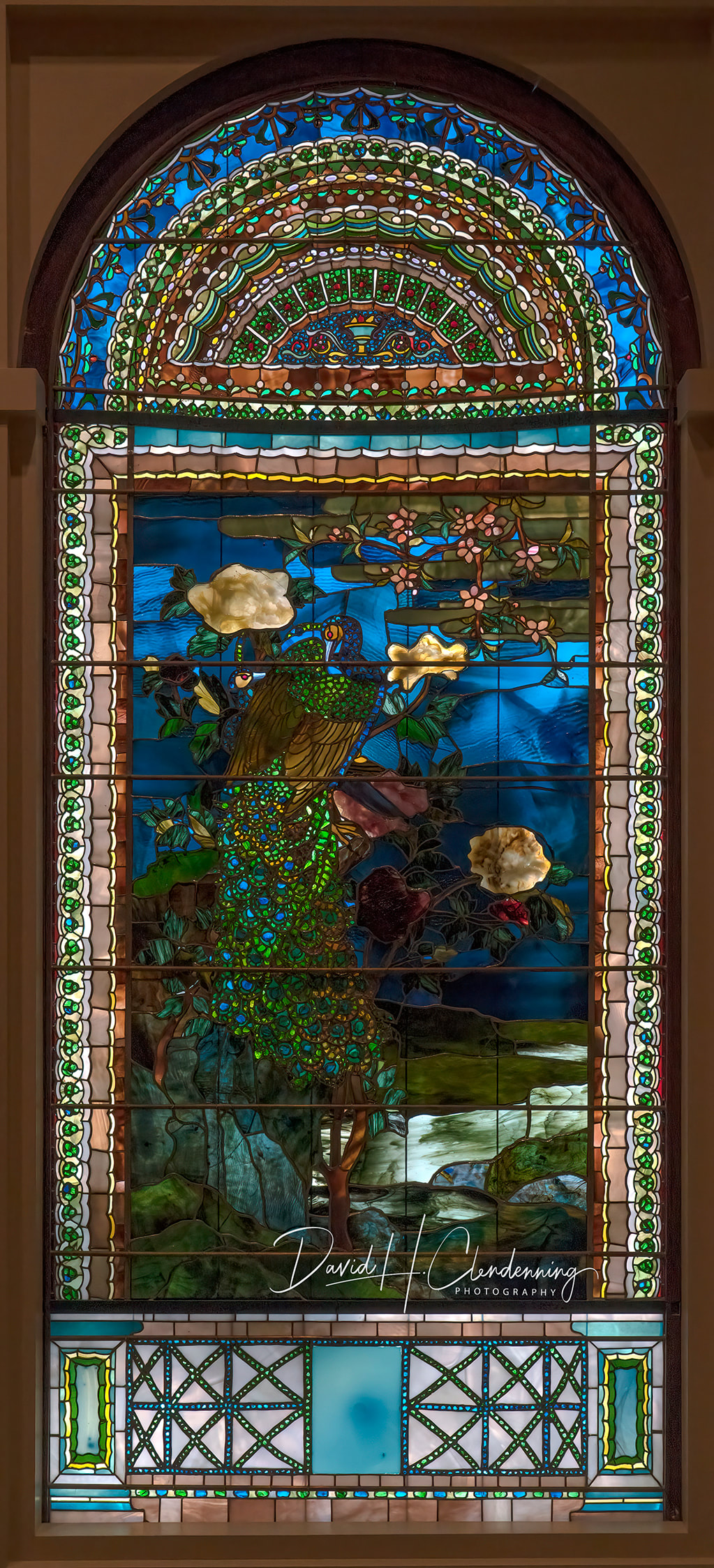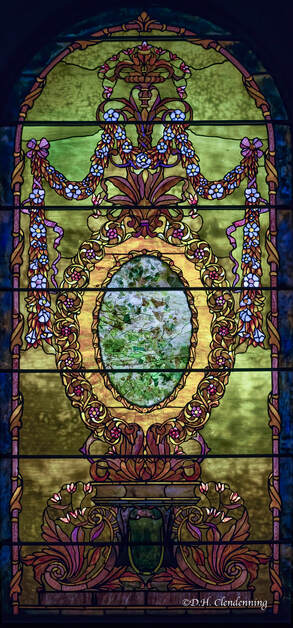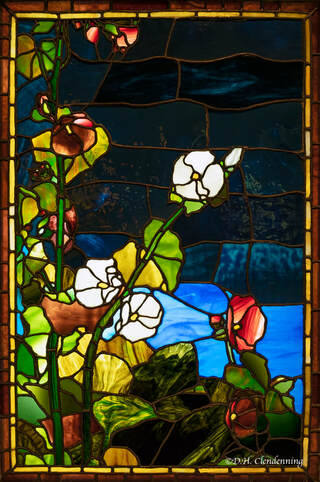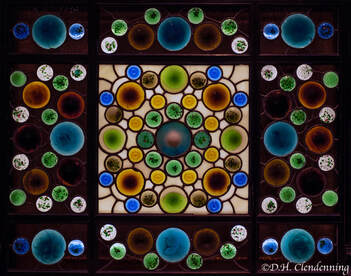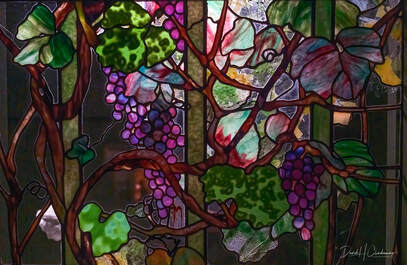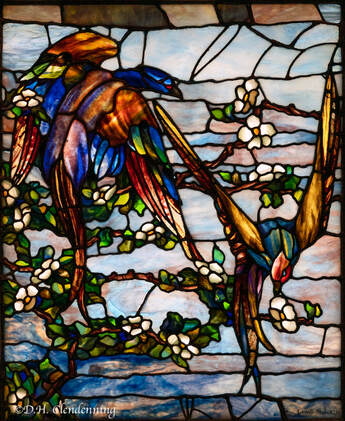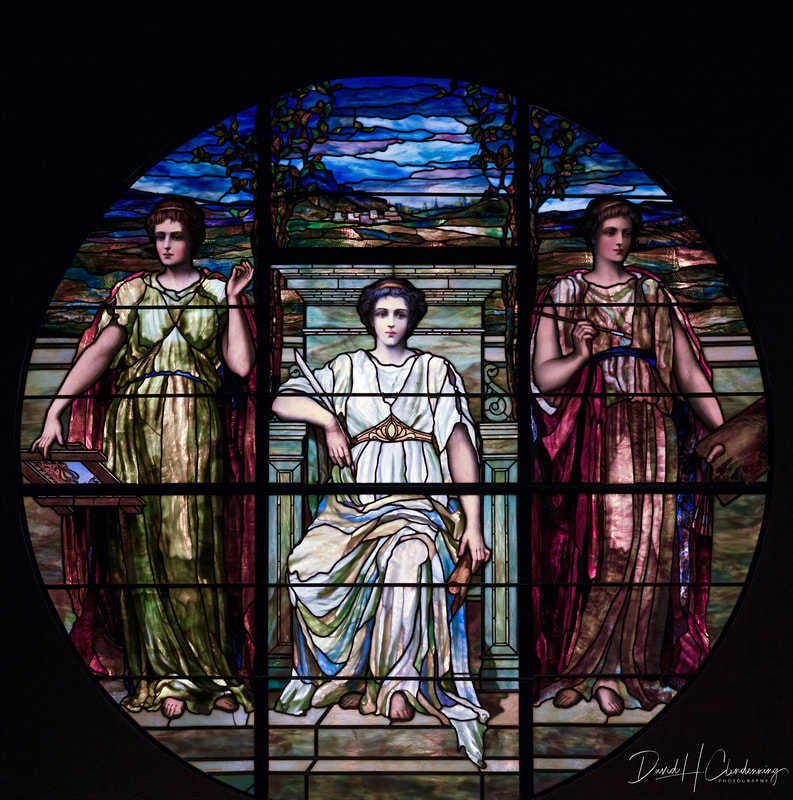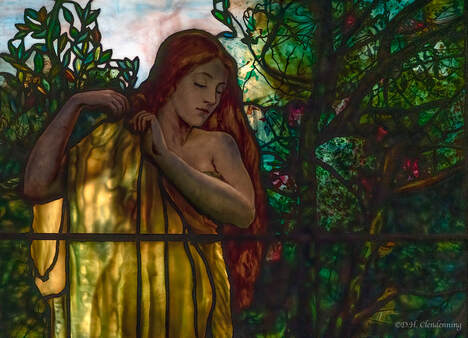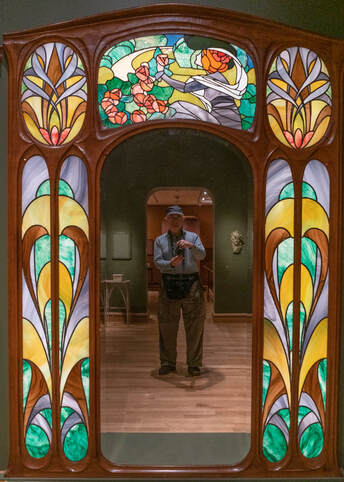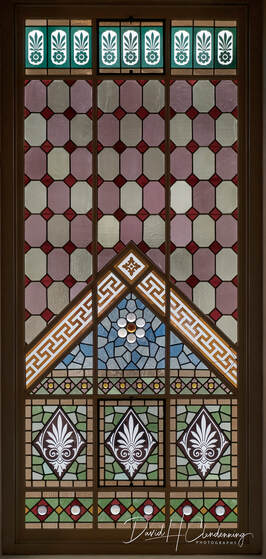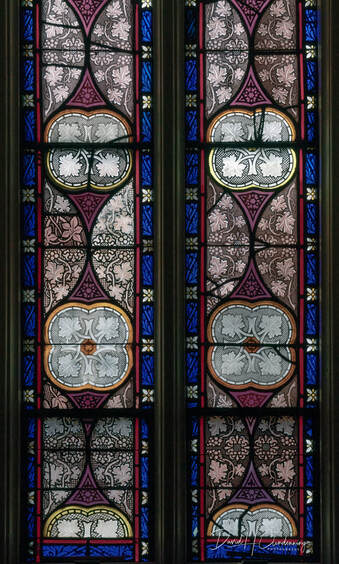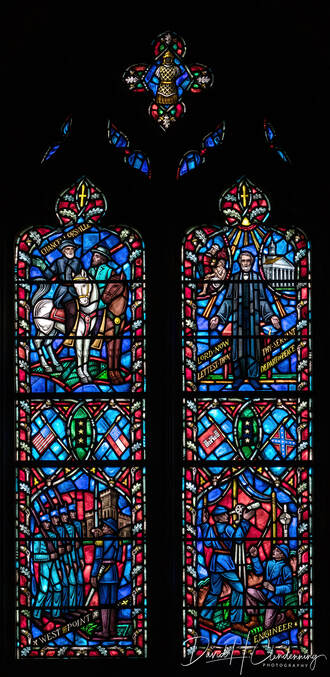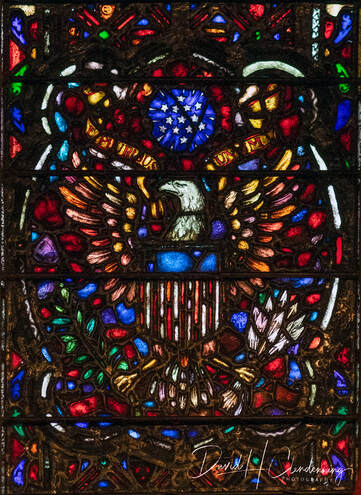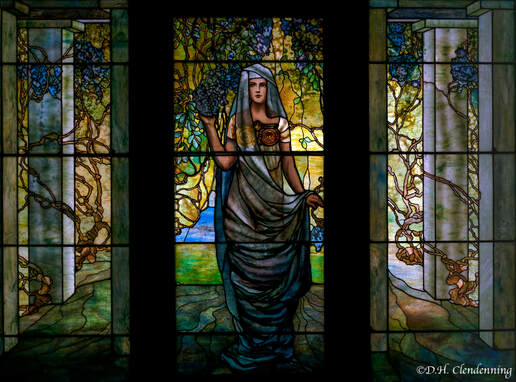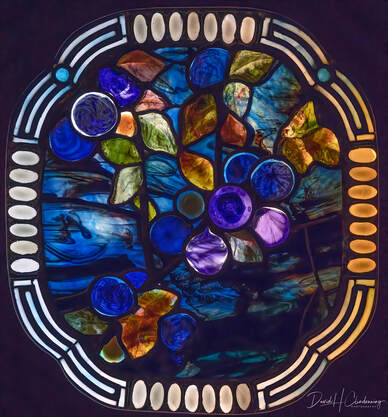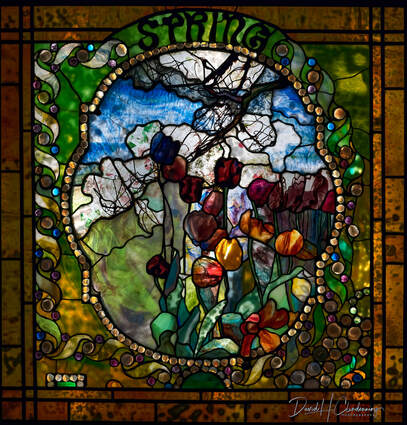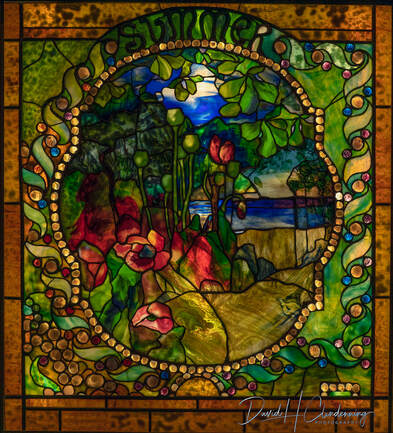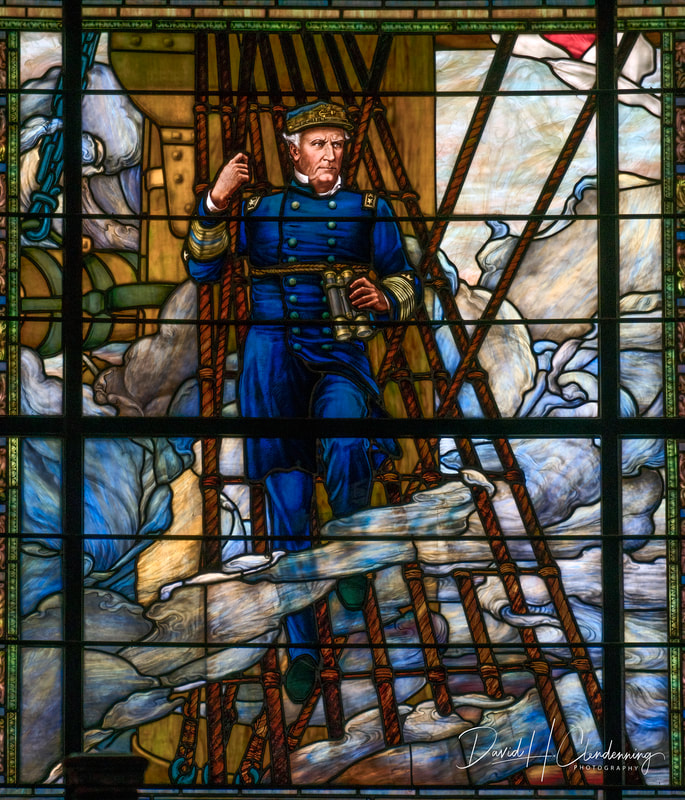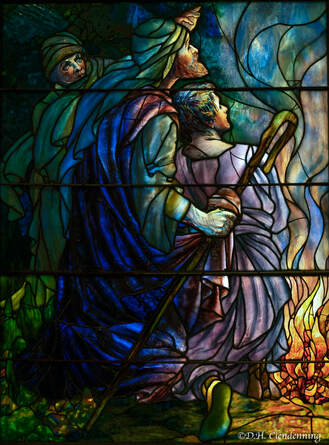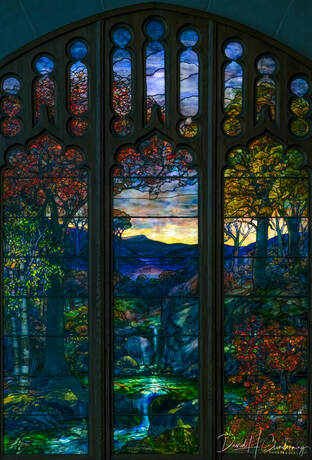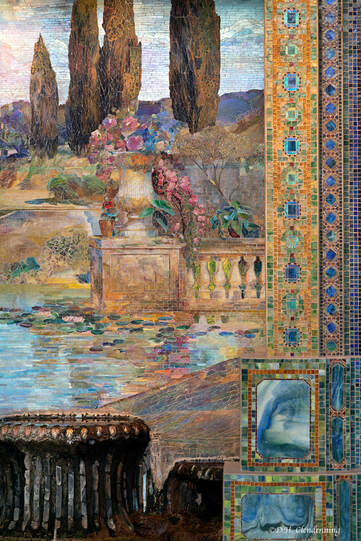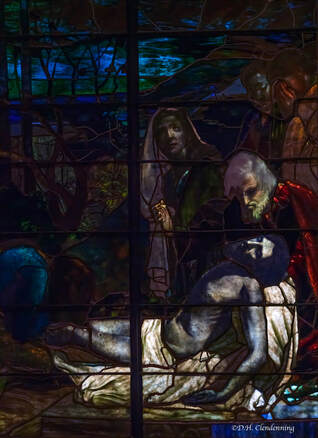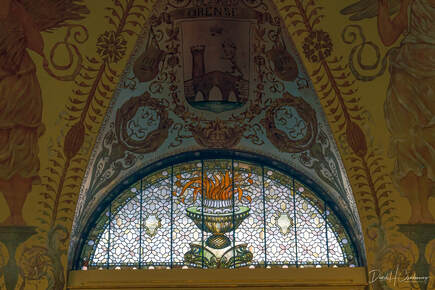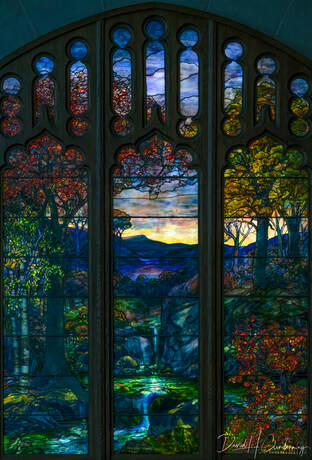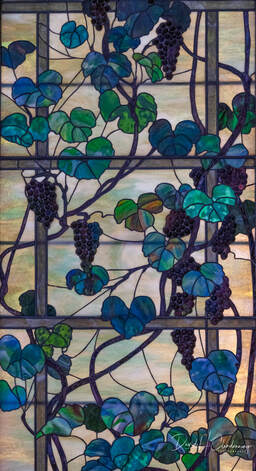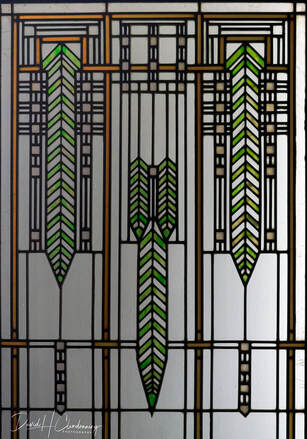Glass Heritage in the United States
Peacocks and Peonies 1 & 11. John La Farge, 1882.
All images taken in museums (marked by "RN") are not for sale and are for educational purposes only
US glass museums
CHIHULY GARDEN AND GLASS, Seattle, Wash. In the shadow of the Space Needle, this site showcases the extraordinary range of Chihuly’s work, from glass-ball-filled boats inside to the large-scale outdoor garden pieces that mirror the shapes or colors of surrounding plants. The colorful ceiling in the Glass House is one of the artist’s largest suspended sculptures. www.chihulygardenandglass.com.
CORNING MUSEUM OF GLASS, Corning, N.Y. The collection showcases more than 3,000 years of glass, while the Contemporary Glass Gallery features works from 1975 on. One of the oldest pieces is a turquoise glass inlay with the image of the pharaoh Akhenaten, who ruled during Egypt’s Eighteenth Dynasty
CHRYSLER MUSEUM OF ART, Norfolk, Va. More than 10,000 glass objects range from ancient to contemporary, including English, European, art nouveau, and art Deco styles. Highlights include a large selection of Tiffany glass, French glass, and an English cameo glass collection. Among works by 21st-century artists, Karen LaMonte’s translucent cast-glass dress, “Reclining Drapery Impression,” is ethereal and striking. chrysler.org.
THE CHARLES HOSMER MORSE MUSEUM OF AMERICAN ART, Winter Park, Fla. The Morse Museum houses one of the largest collections of glass by Louis Comfort Tiffany in the world, including his glittering, almost gaudy chapel interior from the 1893 World’s Columbian Exposition in Chicago and the Daffodil Terrace, among other pieces of art and architecture, from his Long Island country estate, Laurelton Hall. morsemuseum.org.
Louis C Tiffany and the Art of Devotion
Tiffany’s companies -– Tiffany Glass and Decorating Company, New York and, starting 1902, Tiffany Studios -– created hundreds and hundreds of stained-glass windows for churches and for a couple of handfuls of synagogues throughout the United States,
Tiffany’s companies -– Tiffany Glass and Decorating Company, New York and, starting 1902, Tiffany Studios -– created hundreds and hundreds of stained-glass windows for churches and for a couple of handfuls of synagogues throughout the United States, particularly after it opened an ecclesiastical division in 1899. Many are still in place, though there is no catalogue raisonne that provides a comprehensive list. Others –- now owned by museums, private collectors, and art dealers –- were acquired when houses of worship were demolished, often to make way for new buildings.
In creating stained-glass windows, Tiffany drew on a wide range of subjects and historical styles and references while imbuing them with remarkable artistry and incorporating both traditional and innovative techniques in glass making.
after it opened an ecclesiastical division in 1899. Many are still in place, though there is no catalogue raisonne that provides a comprehensive list. Others –- now owned by museums, private collectors, and art dealers –- were acquired when houses of worship were demolished, often to make way for new buildings.
In creating stained-glass windows, Tiffany drew on a wide range of subjects and historical styles and references while imbuing them with remarkable artistry and incorporating both traditional and innovative techniques in glass making.
Tiffany’s companies -– Tiffany Glass and Decorating Company, New York and, starting 1902, Tiffany Studios -– created hundreds and hundreds of stained-glass windows for churches and for a couple of handfuls of synagogues throughout the United States, particularly after it opened an ecclesiastical division in 1899. Many are still in place, though there is no catalogue raisonne that provides a comprehensive list. Others –- now owned by museums, private collectors, and art dealers –- were acquired when houses of worship were demolished, often to make way for new buildings.
In creating stained-glass windows, Tiffany drew on a wide range of subjects and historical styles and references while imbuing them with remarkable artistry and incorporating both traditional and innovative techniques in glass making.
after it opened an ecclesiastical division in 1899. Many are still in place, though there is no catalogue raisonne that provides a comprehensive list. Others –- now owned by museums, private collectors, and art dealers –- were acquired when houses of worship were demolished, often to make way for new buildings.
In creating stained-glass windows, Tiffany drew on a wide range of subjects and historical styles and references while imbuing them with remarkable artistry and incorporating both traditional and innovative techniques in glass making.
All images taken in museums (marked by "RN") are not for sale and are for educational purposes only
|
Autumn Landscape
This window, executed late in Tiffany's career, portrays the late afternoon through rich autumnal foliage. No paint was used to add detail; rather, the modelling, texture, and form were created solely with glass, using the full range developed at Tiffany Studios. The variegated surface was made by wrinkling glass in its molten state. Different colour effects were achieved by embedding tiny, confetti-like flakes of glass in the surface. Plating - the superimposition of several layers of glass on the back of the window - added depth. - The Metropolitan Museum of Art, N.Y.C. |
Section of the Dream Garden mosaic
Tiffany's work in mosaic, inspired by Byzantine examples, dates to the 1880s, when he began experimenting with iridescent glass and transparent tesserae backed with metal leaf. Mosaic decoration graded countless interiors by him, from churches to department stores. - The Met, N.Y.C. |
